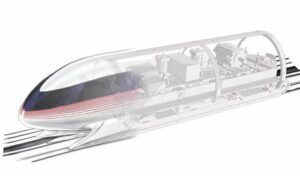In the intricate dance of supply chain management, maintaining optimal inventory levels is both an art and a science. Accurate demand sensing, the ability to anticipate customer needs and fluctuations, is a vital element in achieving this delicate balance. Enter the era of AI-driven demand sensing, a transformative approach that leverages the power of artificial intelligence to revolutionize inventory control. This article explores how smart inventory management, empowered by AI-driven demand sensing, is reshaping the supply chain landscape by enhancing efficiency, reducing costs, and ensuring customer satisfaction.
The Need for Accurate Demand Sensing
Traditional inventory control often relies on historical sales data and assumptions about future demand. However, the unpredictable nature of markets, changing consumer behaviors, and external factors such as weather or economic shifts can render such methods ineffective. This is where AI-driven demand sensing steps in, providing real-time insights and predictive capabilities that traditional methods can’t match.
AI-Driven Demand Sensing: Unleashing the Power of Data
AI-driven demand sensing employs advanced algorithms and machine learning to analyze vast amounts of data from various sources. This includes historical sales, customer behavior, social media trends, economic indicators, and even real-time point-of-sale data. By processing this data, AI algorithms uncover intricate patterns and correlations, enabling more accurate predictions of future demand.
Benefits of AI-Driven Demand Sensing in Smart Inventory Control
- Enhanced Accuracy: AI-driven demand sensing captures subtle nuances in demand patterns, enabling accurate predictions that account for seasonality, promotions, and changing customer preferences.
- Real-Time Insights: Traditional methods may lag in reflecting shifts in demand. AI-driven demand sensing provides real-time insights, allowing supply chain managers to respond swiftly to changes and avoid stockouts or overstock situations.
- Reduced Costs: Optimized inventory levels, driven by accurate demand sensing, lead to reduced carrying costs and minimized waste, resulting in significant cost savings for businesses.
- Improved Customer Satisfaction: By accurately anticipating customer needs, businesses can ensure products are readily available, enhancing customer satisfaction and loyalty.
- Efficient Supply Chain: AI-driven demand sensing optimizes production, procurement, and distribution processes, streamlining the supply chain and minimizing inefficiencies.
Implementing AI-Driven Demand Sensing in Smart Inventory Control
- Data Collection and Integration: Gather and integrate diverse data sources, including historical sales data, social media sentiment, economic indicators, and real-time sales data.
- Model Training: Train AI models using historical data and relevant variables, such as sales volumes, weather patterns, or promotional activities.
- Real-Time Updates: Implement models that can adapt to new data in real time, providing accurate insights even in rapidly changing market conditions.
- Validation and Fine-Tuning: Continuously validate and fine-tune the models using actual demand data to improve accuracy and predictive capabilities.
Challenges and Considerations
- Data Quality: Reliable AI-driven demand sensing relies on high-quality, clean, and relevant data. Data accuracy and consistency are paramount for meaningful insights.
- Expertise and Resources: Developing and implementing AI-driven demand sensing models requires specialized expertise, data scientists, and suitable computing infrastructure.
- Change Management: Transitioning to AI-driven demand sensing may require adapting organizational processes and embracing a data-driven mindset.
AI-driven demand sensing has ushered in a new era of smart inventory control, empowering supply chain managers with real-time insights and predictive capabilities that were once unimaginable. By harnessing the power of artificial intelligence, businesses can optimize inventory levels, reduce costs, enhance customer satisfaction, and drive overall supply chain efficiency. As supply chains continue to evolve in a rapidly changing world, AI-driven demand sensing becomes an indispensable tool for navigating complexities, anticipating customer needs, and ensuring seamless operations in an increasingly competitive marketplace.
The Perfect Planner Team is here if you have any questions about Smart Inventory Control, and we offer a free consultation service. If you would like to connect with us on this article or any other topic, please message us on LinkedIn, shoot us an email at info@perfectplanner.io, visit our website at www.perfectplanner.io, or give us a call at 423.458.2979.
Author: Thomas Beil
Publication Date: May 15, 2024
© Copyright 2024 Perfect Planner LLC. All rights reserved.






